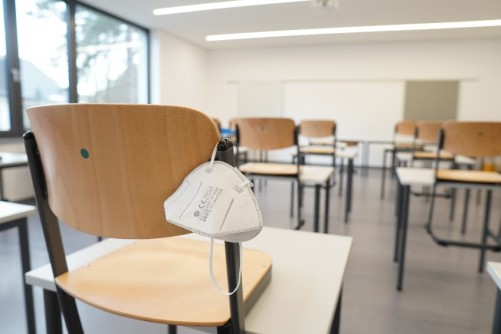This cohort study by Nelson, et al. (2023) examined the risk of school-based transmission of SARS-CoV-2 among kindergarten through grade 12 students and staff in 10 Massachusetts school districts during two periods: fall 2020/spring 2021 (F20/S21) and fall 2021 (F21). School staff collected data on SARS-CoV-2 index cases and school-based contacts, and SAR was defined as the proportion of contacts acquiring SARS-CoV-2 infection.
Potential factors associated with transmission, including grade level, masking, exposure location, vaccination history, and Social Vulnerability Index (SVI), were analyzed using univariable and multivariable logistic regression models.
For F20/S21, 8 school districts (70 schools, >33 000 students) were included and reported 435 index cases (151 staff, 216 students, and 68 missing role) with 1771 school-based contacts (278 staff, 1492 students, and 1 missing role). For F21, 5 districts (34 schools, >18 000 students) participated and reported 309 index cases (37 staff, 207 students, and 65 missing role) with 1673 school-based contacts (107 staff and 1566 students). The F20/S21 SAR was 2.2% (lower bound, 1.6%; upper bound, 26.7%), and the F21 SAR was 2.8% (lower bound, 2.6%; upper bound, 7.4%). In multivariable analysis, during F20/S21, masking was associated with a lower odds of transmission compared with not masking (odds radio [OR], 0.12; 95% CI, 0.04-0.40; P < .001). In F21, classroom exposure vs out-of-classroom exposure was associated with increased odds of transmission (OR, 2.47; 95% CI, 1.07-5.66; P = .02); a fully vaccinated vs unvaccinated contact was associated with a lower odds of transmission (OR, 0.04; 95% CI, 0.00-0.62; P < .001). In both periods, a higher SVI was associated with a greater odds of transmission.
In this study of Massachusetts schools, the SAR for SARS-CoV-2 among school-based contacts was low during two periods, and factors associated with transmission risk varied over time. These findings suggest that ongoing surveillance efforts may be essential to ensure that both targeted resources and mitigation practices remain optimal and relevant for disease prevention.
Reference: Nelson SB, et al. Prevalence and Risk Factors for School-Associated Transmission of SARS-CoV-2
JAMA Health Forum. 2023;4(8):e232310. doi:10.1001/jamahealthforum.2023.2310
Source: JAMA Health Forum
